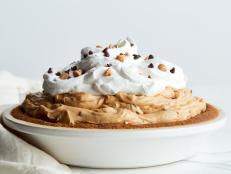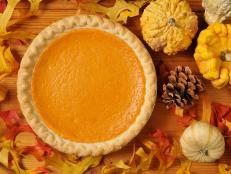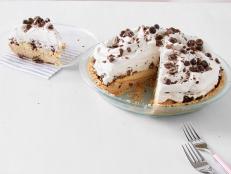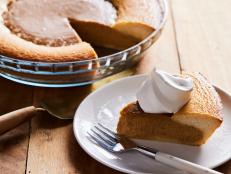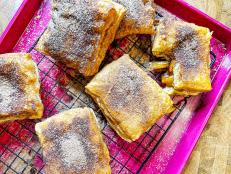Which is Healthier: Fruit Cobbler vs. Fruit Pie

Summer is all about fruit-filled desserts. When faced with the choice of cobbler or pie, which would you choose? Read the pros and cons of each and YOU vote for the healthier winner.
Cobblers are a combo of fruit filling topped with a crust made of biscuit dough, traditional pie crust or a pour-on batter. Typically, the topping is made from milk, sugar, and flour. It’s easier to control the ingredients in the crust-topping of a cobbler than it is with pie; if you don’t want your cobbler too sweet, you can choose to cut down on the sugar. You can also use less of the topping, since it doesn't have to cover the entire top of the cobbler.
A 4-ounce piece of peach cobbler contains about 330 calories, 17 grams fat, and 4.5 grams saturated fat (that’s over 20 percent of your daily recommended amounts of both fat and saturated fat!). If the cobbler is baked in a large tray, portion control can go out the window.
- Control portions by baking cobbler in individual ramekins or baking up half the recipe.
- Use less of the topping (about ¼ less) to shave off calories.
- Instead of ice cream, serve with 1 tablespoon of whipped cream.
- Try Robin’s Fruit Cobbler With Almonds or Paula Deen’s slow cooked Berry Cobbler with under 250 calories a serving.
You’ll get in your daily dose of fruit, vitamins and antioxidants with a fruit-filled pie. The fillings are usually fairly simple, with calories coming from the fruit, a touch of sugar and some flavorings containing minimal calories like cinnamon or vanilla extract.
A slice of pie typically contains over 400 calories and 20 grams of fat. Enjoy it a la mode or with whipped cream and you’ve jacked up the calories by 100 to 200 per slice -- yikes! Many pre-made pie crusts are made with heart clogging hydrogenated oils or lard, so the fat you’re eating is not the healthy type. Some pies have crust on the bottom and top. Whether it’s lattice or a fully covered top crust, more crust means more calories and fat.
- Make a healthier pie crust with canola oil to reduce artery clogging saturated and trans fat.
- Skip pie recipes that call for gobs of butter in the filling.
- Go for totally fruit-filled pies as opposed to those filled with higher-calorie ingredients like nuts and raisins.
- Choose pies with crust on the bottom only.
- Try these tips to lighten up your next pie.
- Try a galette (a.k.a. crostada), open-faced tart or turnovers made with lower calorie phyllo dough.
Toby Amidor, MS, RD, CDN, is a registered dietitian and consultant who specializes in food safety and culinary nutrition. See Toby's full bio »
























